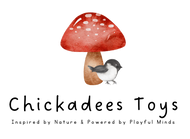
If you have a visual or tactile learner, you are, more than likely, familiar with using manipulatives for learning.
Manipulatives are physical learning tools, engaging children visually and physically with tangible objects.
Manipulatives are helpful for storytelling, demonstrating new concepts and visual representations, creating shapes, patterns, and designs, letter formation, communicating things that are difficult to verbalize, counting, and early math skills.
Using manipulatives is beneficial because the child is actively engaged in discovery during the learning process. Manipulatives are most used as a concrete reference to math concepts. Still, they can also be used in many other early childhood concepts, such as learning colors, shapes, positional phrases, size differentiation, and more.

Why do we use Manipulatives?
- Manipulatives can serve as models that support children as they think about, remember, and communicate about the topics being learned.
- Manipulatives provide another representation for new subjects - Everything from shapes and colors to life cycles and simple math.
- Manipulatives support engagement around which you and your child can talk, listen and do. Using a visual and manipulative representation provides opportunities for discussion and understanding by you and your child.
- Manipulatives can give children ownership of their learning. “What the hand does, the mind remembers.”

How do we choose our Manipulatives?
- Depending on your child's age and abilities, you want to use small pieces that can be maneuvered easily on the surface you are using. But not so small to pose a choking hazard or be difficult to manipulate.
- For math manipulatives, choose pieces that come in sets of 10 or more for consistency and adequate representation.
- Manipulatives don't have to be fancy or expensive. Most of our favorites are free or right at home - Rocks, Dry Beans, Buttons, Straws, Sticks, Acorns, Small Toy Cars, Legos, Game Pieces, Cereal, or Crackers.
- If hands-on lessons are a part of your daily routine, collecting several different sets of manipulatives can be beneficial. Look for items that spark interest in your child and correspond with your lessons. We like to change them out seasonally and store them in clear jars alongside other learning materials.

Manipulatives are most often used in early childhood, as reading and writing skills are not yet developed. However, tactile and visual learners will benefit from using manipulatives throughout their education.
I hope you found something useful in this post and some new ways to incorporate manipulatives into your child’s play and learning. If you have any tips or additional insights, please leave them in the comments below. I’d love to hear them!
Don’t forget to play today, Chickadees!
Ms. Becky
Blog Post Photo Credit - Brit @thesmittyfamgram



1 Kommentar
me encanta todo!!!